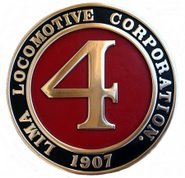I stopped by the engine house this morning to talk to
Keith Berry. Other than
Sam Thomson,
Bill Rodgers and
Harold Tilton, it seems Keith and several other key volunteers were AWOL. My intent was to talk to Keith and then return home and complete a few projects.
I found Sam hunched over the No. 2 cylinder -- his usual posture these days. As I soon discovered, he had started the laborious task of disassembling the valve shaper from the No. 2 cylinder.
I walked into the machine shop to check on Bill and Harold. Bill was machining a spacer for the
middle eccentric on the drive shaft while Harold was milling one of the
slip joints (and
here). It was at that point that Bill told me Sam had reached a milestone. He had finished resurfacing the valve facing to No. 2 cylinder last Saturday.
So I walked over to the engine house and asked Sam about the project. Yes it was true. He completed the last course last weekend.
Sam asked me to jump in the cab. That can only mean one thing -- he need a helper to raise and lower the slide on the shaper as he disassembled it.
As we worked, I asked a few questions. Our exchange went something like this:
"What do you have to say about the No. 2?"
"Finito! No. 3 is next." Sam pointing to the "3" painted on the cylinder head. "See, I can tell. It's that one."
The machine work is done on No. 2, Sam explained. He pointed out that some handwork remains.
"How long will it take to resurface No. 3 cyliner?"
It took eight months to completely resurface No. 2 cylinder.
"I'm not finished with No. 2 yet," Sam responded. "I've got to get this thing (Sam's Rube Goldberg or valve shaper) off. I know for a fact that's not going to be easy."
For the next hour, Sam struggled to fit his hand and the Allen wrench into the confined space between the No. 2 and No. 3 cylinders. Tight work space and low light conditions have plagued him since he put the shaper to work last March.
I didn't get a prediction out of Sam. But I'm certain he can shave two months off the time it took to resurface the No. 2 cyliners.
A note: I'll post photos as soon as I can. My laptop -- that's were the images are archived -- is heading for the shop.
.jpg) The link and pin coupler joins the combine car to the parlor car behind the engine house of the El Dorado Western Railway. The Diamond and Caldor Railway used these basic couplers throughout its 47-year history. The dangerous devise spelled the death of at least one trainman on the common carrier line.
The link and pin coupler joins the combine car to the parlor car behind the engine house of the El Dorado Western Railway. The Diamond and Caldor Railway used these basic couplers throughout its 47-year history. The dangerous devise spelled the death of at least one trainman on the common carrier line. 



